- Overview
- Trip Outline
- Pricing
- Trip Includes
- Trip Excludes
- Gallery
- Reviews
- FAQ
Route:

Technical Characteristics:
Route Profile: Medium. Daily walks up to 8 hours per day, at high altitude. Previous hiking experience and physical conditioning would be of benefit.
Travel Season: Any date on request from January 2 to December 31, 2023
*Group rates available for this tour. As this is a guided tour, the pricing improves with more people participating. Please ask us for details
Accommodation:
3* hotels
Galapagos - the Enchanted Islands – undoubtedly are the highlight of every Ecuador trip and you also should not miss a visit, for it is the most unique living museum of evolutionary changes and you would get to know a variety of exotic species endemic to this Archipelago! Galapagos is the perfect setting to experience the evolutionary changes, which have led to a new understanding of life on earth. Animals unafraid of man and so different from any others found elsewhere, make visitors wonder about their existence on our planet. Among the animals found, are the different species of giant “Galapagos” tortoises that gave the islands their name, a variety of birds and marine mammals such as iguanas, sea lions, dolphins, whales as well as a great number of fish. Among the flora, the most distinctive are mangroves and endemic cacti - to mention only some of them!
Itineraries
Day 1
Arrival in San Cristobal
Upon arrival in San Cristobal, you will be welcomed by your guide and brought to your hotel. San Cristóbal is one of the few islands that have permanent settlements. At the south end of the island you find the sleepy capital of the Galapagos province, Puerto Baquerizo Moreno. Already at the dock you are greeted by the sea lions. If you look closely you can see sally light foot crabs, marine iguanas, frigate birds and the endemic Chatham mocking bird. The Interpretation Center which you will visit today was opened to the public in 1998. Today the Galapagos National Park Visitor Center in San Cristóbal presents a complete and documented history of the Galapagos, its ecosystems, flora and fauna. During the visit you can obtain information that will help you understand more the natural and human history of the Galapagos with a great emphasis on the human settlement and conservation work. The grounds of the Interpretation Centre are good to see the endemic Chatham mockingbird and San Cristóbal lava lizard. Go on to the visitors site Frigate Bird Hill which is only about 1.5 kilometers outside of Puerto Baquerizo Moreno and is easily reached by walking. From this hill you have a good view of the town and the bay. It is an excellent site to observe the great and the magnificent frigate birds.
Day 2
San Cristobal Trekking to La Loberia
La Lobería is a piece of coast which earns its name from the large amount of sea lions (“lobos marinos” in Spanish) resting on its rocks and sand. In spite of the fact that La Lobería is beyond the boundaries of the National Park, due to its importance the Park staff took over its maintenance and care. Along the trail one will find button mangrove, white mangrove, chala, palo santo, cotton, Tiquilia, mañana gloriosa and other species of the coastal area, such as cacho de chivo whose seeds are the principal food for various types of chaffinchs. Before returning to Puerto Baquerizo Moreno enjoy your time at the beach.

Day 3
San Cristobal – Santa Cruz
After breakfast transfer to Santa Cruz Island. Santa Cruz Island is located in the middle of the archipelago and covers an area of 98,555 hectares. Puerto Ayora with its approximately 15,000 inhabitants is the largest human settlement on the islands; the cozy and tended town encircles the bay. There are beautiful beaches and bays with sea lions, marine turtles and seabirds. Today you will visit the highlands of Santa Cruz. During a short stop you have the opportunity to take pictures of the Twin Craters. Located one in front of the other on both sides of the road connecting Puerto Ayora to Baltra, the Twin Craters are a magnificent site. They were formed as a result of the collapse of the crust into the crater. There are many craters of this type in this area, which signals the possibility that these craters are all elements of the same fissure. The vegetation of this area is dominated by Scalesia trees, which make the site a beautiful green landscape. You will visit a lava tunnel, a fun and geologically informative visit. Taking a short walk you can also observe the famous giant tortoise in its natural environment. Enjoy your lunch in the highlands. In the afternoon you will visit Tortuga Bay. A 45 minute walk out of town will lead you to Tortuga Bay, a paradisiacal beach and one of the longest white sandy beaches in the archipelago. Marine iguanas, sharks and sea turtles can be seen and bird watchers will enjoy the migratory birds walking on the shore. A western rocky edge divides the beach, resulting in a calm small cove and beach surrounded by mangroves. Here you have the opportunity to swim and snorkel around the bay.
Day 4
Santa Cruz Trekking to Cerro Crocker
Today you will climb the highest hill of the Island Santa Cruz. A path north from Bellavista leads toward Cerro Crocker (864m) and other hills and extinct volcanoes. This is a good chance to see the vegetation of the scalesia, miconia and fern-sedge zones and to look for birds such as the vermilion flycatcher, the elusive Galápagos rail and the paint-billed crake. It’s around five kilometers from Bellavista to the crescent-shaped hill of Media Luna, and three kilometers further to the base of Cerro Crocker. In the afternoon you will visit the Charles Darwin Research Center in Puerto Ayora. It was inaugurated in 1964 and the breading center, in cooperation with the Galapagos National Park Service, a few years later. Here you will get to know the conservation efforts promoted by this institution, and stroll among an impressive giant prickly pear cactus forest where endemic land birds can be seen. The tiny turtle babies are affectionately being cared for and as soon as they are old and strong enough are prepared for their repatriation.

Day 5
Santa Cruz Day tour to ONE of the described islands
North Seymour
The day trip starts with an approximately 42 kilometer bus ride from Puerto Ayora to the Itabaca canal, where you get on a boat for another nine kilometers until you reach the island of North Seymour. North Seymour is a small, flat island surrounded by low cliffs, barely separated from Baltra Island by a small narrow stretch of water. You will be landing near a long sandy beach, where sea lions and marine iguanas hang out between the rocks. The interior has a Palo Santo and opuntia cactus forest with blue-footed boobies and magnificent frigate bird colonies. The male of the frigate birds blow up their red throat pouch during their mating rituals. In addition, there are lots of sally light foot crabs and black marine iguanas. Part of the trip includes snorkeling on the beach of Bachas (approximately one hour).

South Plaza
To reach South Plaza Island you drive 42 kilometers by bus from Puerto Ayora to the Itabaca canal, where you get on boat and ride from the Itabaca canal for about 15 kilometers to South Plaza Island. The island is uplifted sea floor, rather than a volcanic island like nearby Santa Cruz. The island rises from a flat northern edge and tilts gently up to steep 25 meter cliffs on the southern side. Although South Plaza is barely one kilometer long and 100 meters wide it is home to an amazing variety of wildlife. The today´s trail (approximately one hour) will show you the most characteristic plant of the island the ground cover: sesuvium. During the rainy season its color is a green to yellowish tone, in the dry season (end of June till January) a bright red. It contrasts very well with the yellow land iguana that you find here. You have the possibility to swim and snorkel at Punta Carrión (approximately one hour).
Bartholomew
Bartholomew Island will be reached by bus and boat. First you drive around 42 kilometers by bus from Puerto Ayora to the Itabaca canal. Afterwards you take a boat and ride about 30 kilometers until you reach the Island of Bartholomew. The volcanic island of Bartholomew, characterized by a 114 meter high volcanic crater, is 1.2 kilometers in size and located close to the east coast of Santiago Island. The landscape of the island is breathtaking. The black lava fields and gray-brown cinder cone are contrasting with the young green vegetation of the island and the sand beaches. Your route will take you up on wooden stairs to the summit of the volcano crater. You have an impressive view of the surrounded islands, including the eroded tuff cone of Pinnacle Rock. On boardwalks, you will hike (approximately 45minutes) through the breathtaking landscape which seems extraterrestrial. During the hike to the summit, you may see marine iguanas, lava lizards and various cacti, one of the first signs of plants on the relatively young lava ground. Pinnacle Rock – the remains of an eroded tuff cone – leans into Bartholomew’s northern bay and provides one of the most recognizable landmarks in the Galapagos Islands. You can relax on the long beach of Sullivan Bay or enjoy the marine life while snorkeling (approximately one hour).
Santa Cruz - Floreana
After breakfast transfer to Floreana Island. Today, you will be brought to the Pirate Caves. The first pirates came to Floreana in 1593 when they found the caves which offered a source of fresh water. The caves have also become attractive for native inhabitants in order to supply themselves with drinking water. From the caves you walk back to the village. The afternoon is at leisure.

Day 6
Santa Cruz - Floreana
After breakfast transfer to Floreana Island. Today, you will be brought to the Pirate Caves. The first pirates came to Floreana in 1593 when they found the caves which offered a source of fresh water. The caves have also become attractive for native inhabitants in order to supply themselves with drinking water. From the caves you walk back to the village. The afternoon is at leisure.
Day 7
Floreana Hike to Post Office Bay 7 hours
Early in the morning we will go on a hike to the Post Office Bay, starting from Puerto Velazco Ibarra. On your way, you have the chance to cross paths with turtles, flamingos, pintails, stilts and a diversity of birds in all colors and sizes. A few hundred years ago, whalers used the spot to leave messages for their families at the “Post Office”. Whenever a ship from their countries passed by, the seamen took the letters in order to deliver them to the whalers’ homes. Even though it took a while until the mail got reached its destination, this tradition has been established over the years and even today people come to Floreana Island to be part of the Post Office procedure. In the afternoon, you will return to the village by boat, which until recently used to be the only way to get to the bay.
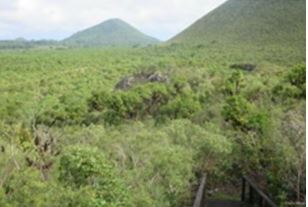
Day 8
Floreana – Isabela Hike to Cerro Allieri
Today you'll hike at one of the island's highest points, Cerro Allieri, which provides stunning landscapes and a great variety of flora and fauna, including species that were once thought to be extinct. This area is also home to several types of finches, including the critically-endangered medium tree finch. In the afternoon transfer to Isabela Island.
Day 9
Isabela
After breakfast you visit the Galapagos National Park’s Giant Tortoise Breeding Centre, which is the biggest breeding centre of the archipelago. In the Breeding Centre you will be able to observe tortoises of all ages and sizes. You will also learn about the reproduction and rearing of giant tortoises and see all the work that is being carried out to help recover the wild populations of these species. This programme is part of the repatriation programme of the Galapagos National Park. Afterwards you head for the Laguna of the Flamingos, “Pozo de los Flamingos”, where you have the rare opportunity to observe these animals very closely. In the afternoon, you will visit “Las Tintoreras” which is located only a short distance from Puerto Villamil. After a short boat journey, you will go ashore to see a colony of white tipped reef sharks resting in a lava canal, sometimes accompanied by other sharks and sea lions. Nearby hundreds of marine iguanas can be observed, as “Las Tintoreras” is one of their main breeding sites. On the sandy beaches sea lions play and relax in the sun. This is one of Isabela´s most beautiful visitor sites. On the way back to Puerto Villamil, you will maybe get the chance to see penguins and blue-footed boobies on the rocks.
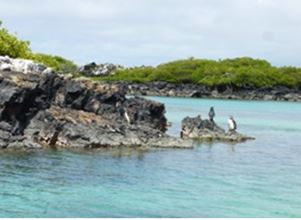
Day 10
Isabela Hike to Sierra Negra and Volcano Chico
The volcano Sierra Negra is located in the southern part of Isabela between the volcanoes Alcedo and Cerro Azul. Sierra Negra's caldera (9 km x 7.5 km) is the largest in the Galapagos Islands and the second largest in the world after Ngoro Ngoro. The journey up to the crater begins at Puerto Villamil. From town you drive about 45 minutes to the beginning of the trail which will lead you on an approximately 1.5 hour walk to the rim of the crater. The landscape along the path is characterized by introduced and native plants. Once at the top the view from the rim of the volcano is spectacular on a clear day and you might see fumaroles inside the craters. You will continue on to the Volcano Chico, located in the north-eastern part of Sierra Negra. Near the rim of the crater Sierra Negra you will descend a short trail that is made exclusively for pedestrian use. Once you arrive at Volcano Chico, see the various formations of petrified lava of many different colours and textures. Have a look at the fumaroles scattered throughout this area. On a clear day you will be greeted by a majestic view of the Perry Isthmus and the surrounding islands.

Day 11
Isabela – Santa Cruz
In the morning, you take the speedboat to Santa Cruz Island, where you will be transferred to the airport of Baltra and catch your flight back to Guayaquil or Quito.

Prices
Included:
- 10 nights’ accommodation
- Meals according to program (9 x breakfast and 4 x lunch)
- All services
- Taxes
- Entrance fees
- Tax and service charge at the hotels as well as the mandatory luggage handling fees
Not Included:
- Optional tours
- Domestic airfares
- Airport taxes
- Personal expenses
- Extras at the hotels
- Drinks during meals if not otherwise mentioned
- Non-mandatory tips
No Details Found




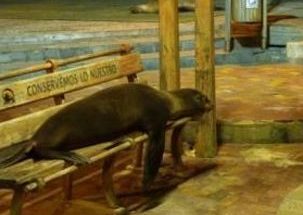


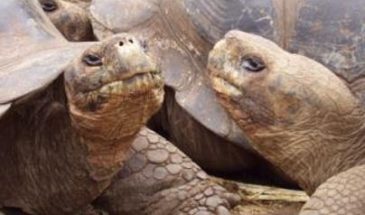
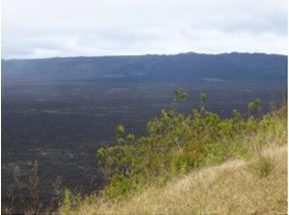

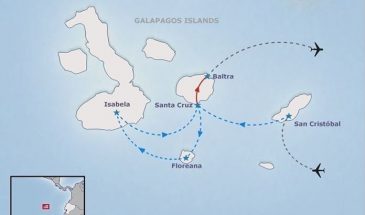



There are no reviews yet.